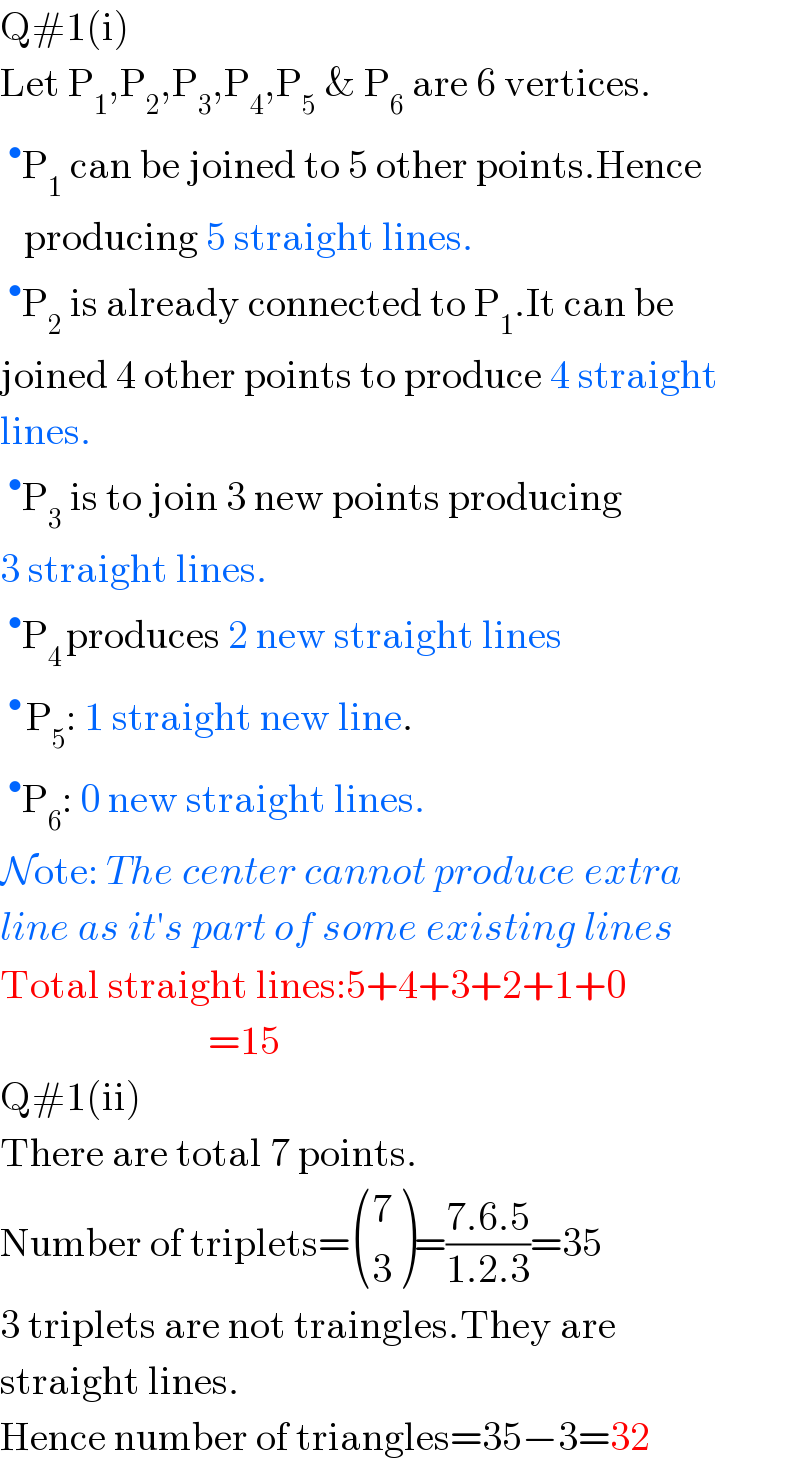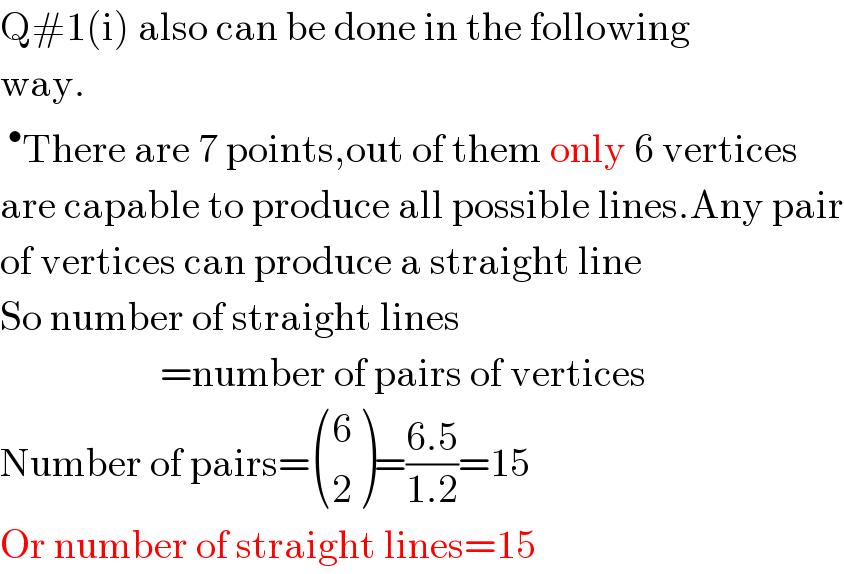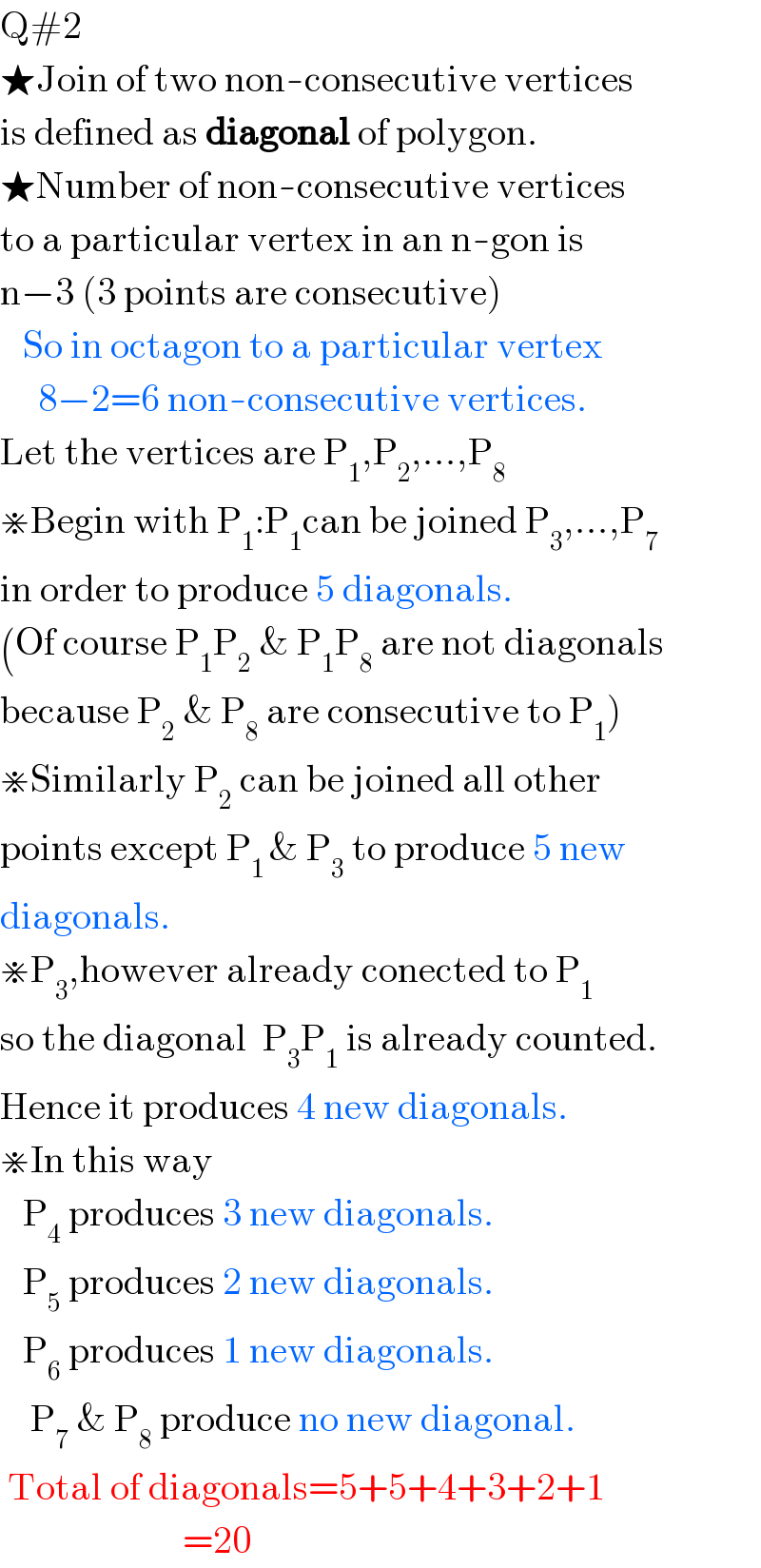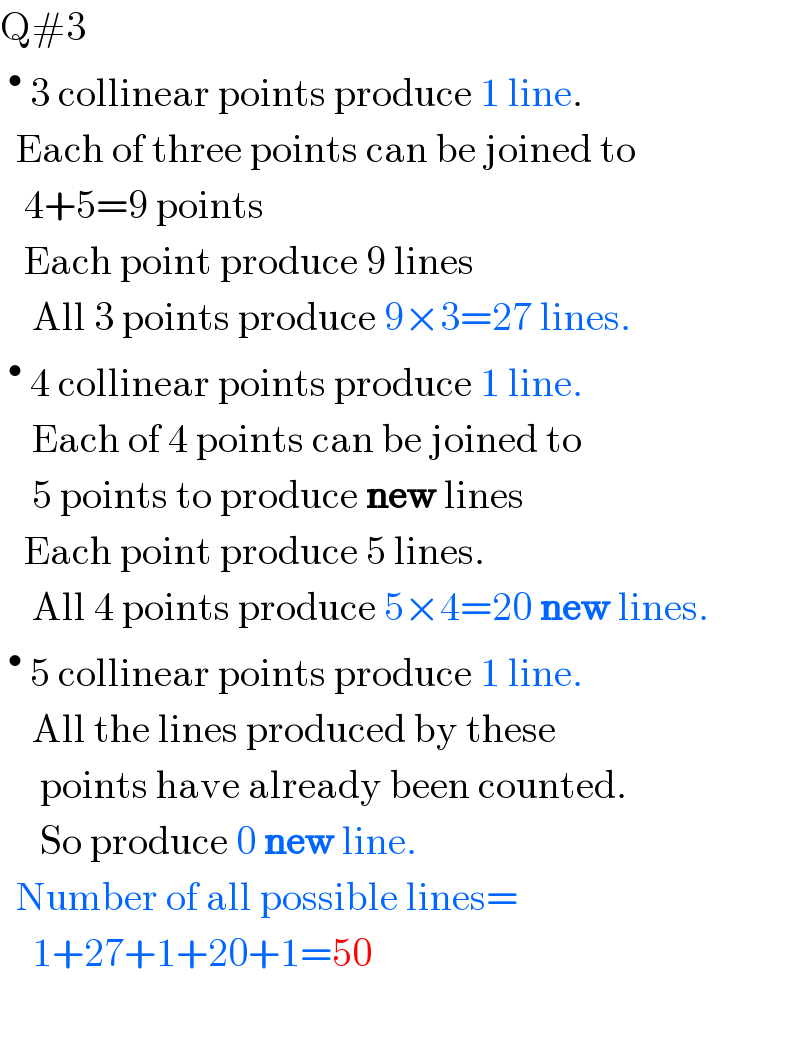
Question and Answers Forum
Previous in Permutation and Combination Next in Permutation and Combination
Question Number 35347 by chakraborty ankit last updated on 18/May/18

Answered by Rasheed.Sindhi last updated on 18/May/18

Commented by Rasheed.Sindhi last updated on 18/May/18

Answered by Rasheed.Sindhi last updated on 18/May/18

Answered by Rasheed.Sindhi last updated on 19/May/18

Commented by chakraborty ankit last updated on 21/May/18

